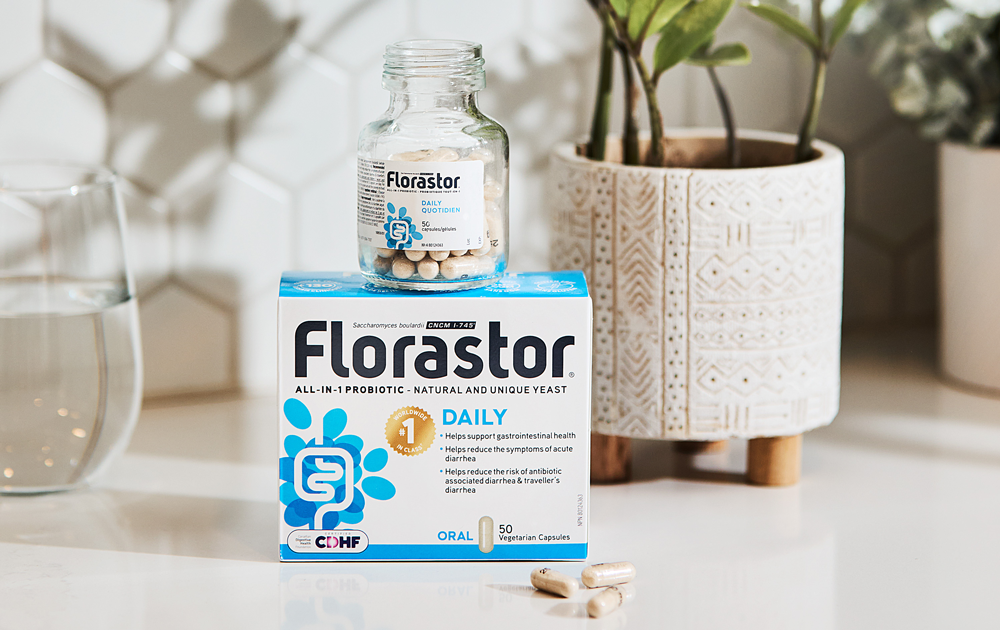As of today, a total of 11 meta-analysis and systematic reviews have been published looking at the efficacy of the Saccharomyces boulardii probiotic in the prevention and/or management of a number of highly relevant gastrointestinal issues in both children and adults.
These include:
- Antibiotic associated diarrhea
- Acute diarrhea & gastroenteritis in children
- Heliobacter pylori infection
- Neonatal Necrotizing Entercolitis
Meta-analysis and systematic review are powerful scientific tools that rely on statistical methods and the assessment of a group of studies on a similar subject matter.
The conclusions of summative studies like these can increase our confidence that the effect we are observing is tangible because it is replicated in more than one study.
With that in mind, the goal of the today’s article is to summarize the results of these summative papers to further reinforce the growing body of literature supporting the use of Saccharomyces boulardii for these specific issues.
Antibiotic-associated diarrhea [AAD]
Up to 30% of people experience antibiotic-associated diarrhea during a normal course of antibiotic treatment, but the strategic use of probiotics has been demonstrated to protect against this outcome.
In 2005 Alimentary Pharmacology & Therapeutics conducted a meta-analysis using five randomized controlled trials and determined that S. boulardii use reduced the risk of AAD from 17.2 to 6.7%, compared to placebo.
The study concluded that for every ten patients receiving S. boulardii alongside their antibiotic course, one less would go on to develop AAD.
This meta-analysis was updated in 2015 when the same journal published a systematic review including an additional 16 new trials.
Studies including both those conducted in children and adults, with S. boulardii use reducing AAD in adults from 18.7% to 8.5% and from 20.9% to 8.8% in children.
S. Boulardii has also been succesfully studied for use in the reduction of both traveller’s diarrhea and enteral-nutrition related diarrhea [World Journal Of Gastroenterology 2010].
Acute gastroenteritis & acute diarrhea in children
Acute Gastroenteritis is often caused by viral or bacterial infection and is a leading cause of acute diarrhea in children.
Often accompanied by pain, fever, nausea can increase dehydration risk in children, there is a great deal of interest around whether or not probiotic use has a mitigating role to play.
S. Boulardii has been studied extensively for this purpose of use, so let’s take a closer look at the data.
In 2007 Alimentary Pharmacology and Therapeutics conducted a meta-analysis of five randomized controlled trials demonstrating that S. boulardii use significantly reduced the duration of diarrhea by one day while also reducing the risk the diarrhea lasted >7 days, as compared to controls.
A 2014 systematic review out of Pediatrics included a broader set of trials but arrived at similar conclusions regarding S. Boulardii’s capability to significantly reduce the duration of the diarrhea compared to placebo – in this case the mean reduction was 19.7 hours.
More recently, a pair of systematic review and meta-analysis were published looking specifically at the use of S. boulardii in acute gastroenteritis [Szajewska Et al 2020, Fu Et al 2022].
In both cases, the following conclusions were made regarding S. boulardii’s efficacy in managing acute gastroenteritis:
1. Compared to control, reduced total duration of diarrhea [up to 1 day]
2. Compared to control, reduced risk of hospital visit or reduced length of stay
3. Compared to control, reduced episodes of diarrhea in days after treatment.
In all papers above, S. boulardii use was identified as safe with no risk of interaction with other drugs.
H Pylori eradication
H. Pylori infection is relatively common globally and is known to cause gastritis and increase one’s future risk of stomach ulcers.
Not all those infected experience these symptoms, but for those who do they have significant quality of life implications.
H. pylori treatment generally requires a specific course of antibiotics but the complimentary use of S. boulardii in this process has garnered significant attention as a means to increase eradication success rate.
Multiple systematic review and meta-analysis have been conducted to explore the efficacy of S. boulardii for this purpose, including a 2010 paper out of Alimentary Pharmacology and Therapeutics and a subsequent update to that review in 2015 by the same authors.
A total of 11 trials were included and 15% of the participants were children.
The eradication success rate of H. pylori was 80% in those who were provided S. boulardii as part of the standard treatment whereas the eradication success rate was only 71% in controls.
Additional work in this area was published out of the Heliobacter. journal in 2019.
This particular systematic review and meta-analysis included a total of 18 trials and arrived at similar conclusions regarding S. boulardii’s capacity to improve eradication rates and reduce standard treatment side effects.
Neonatal Necrotizing Enterocolitis
Neonatral Necrotizing Enterocolitis (NEC) involves inflammation and tissue damage in the GI tract leading to bacterial infection and is most likely to affect pre-term and very low birth weight infants.
NEC is one of the most common and serious emergencies that can occur in a neonatal care unit.
In 2021, the Journal Of Tropical Pediatrics conducted a systematic review and meta-analysis including a total of ten randomized controlled trials looking at the role of S. boulardii use in pre-term infants.
S. boulardii use significantly reduced the incidence of NEC, improved feeding outcomes and reduced hospitalization days – as compared to the control group.


.jpeg?sw=375&sfrm=png&q=90)


